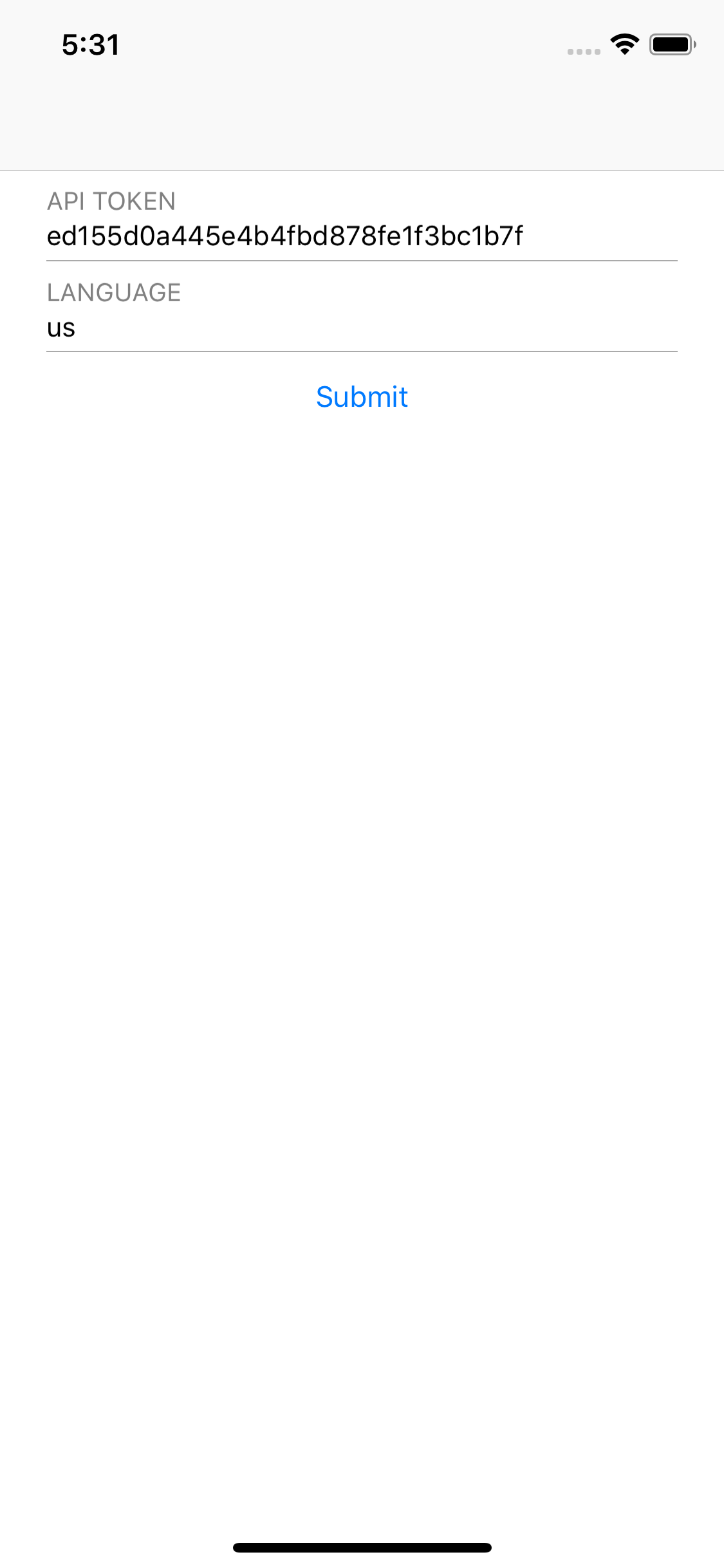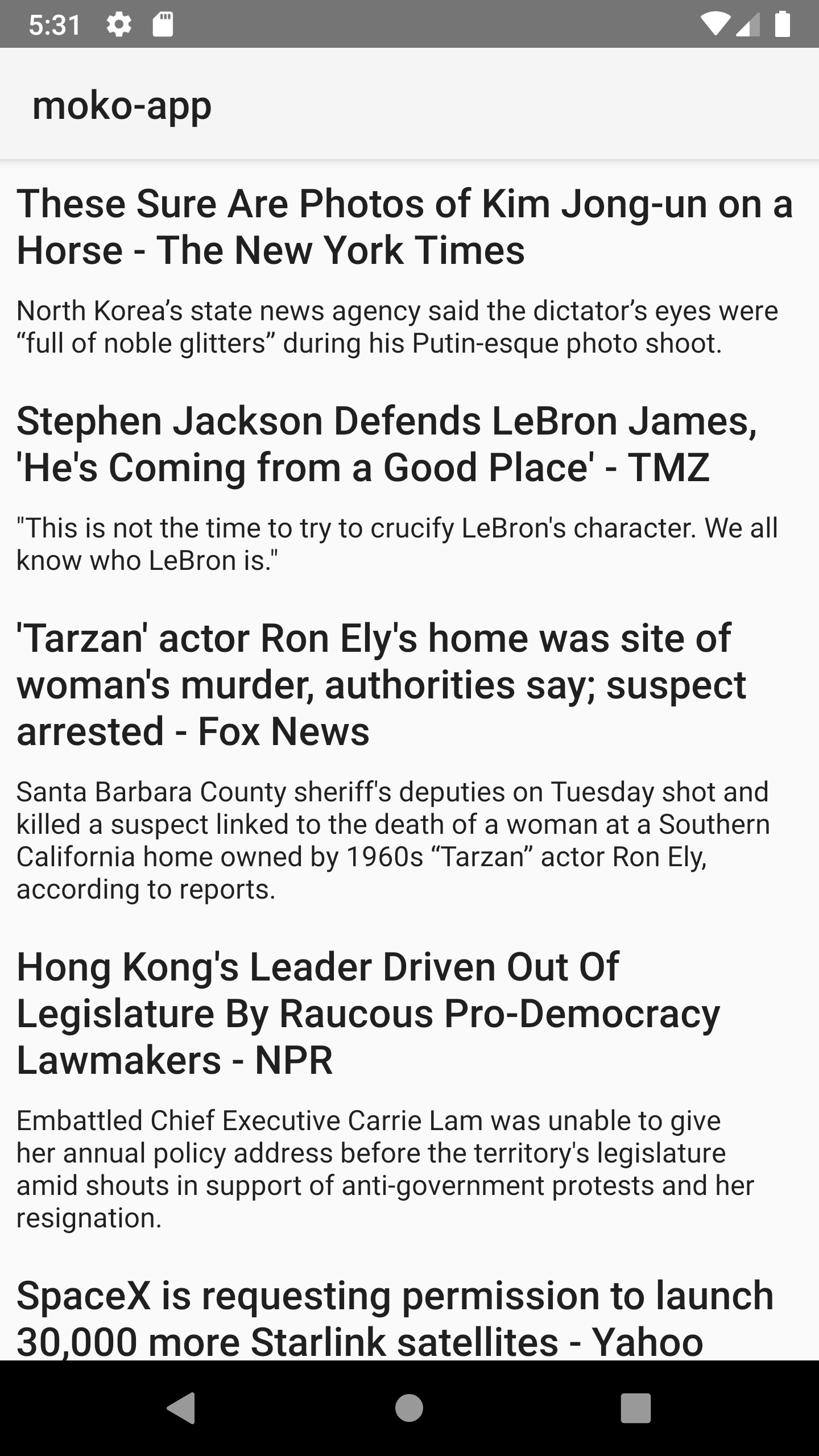A sample project that helps to start building a Mobile Kotlin Multiplatform application. It establishes an architecture optimized for building cross-platform mobile applications through separation of concerns between the UI and business logic.
- Kotlin Multiplatform's motto is Don't Repeat Yourself. Share the business logic code written in Kotlin between Android and iOS apps. 100% native UI and performance (shared code compiles into native libraries);
- Kotlin Gradle DSL – Configure project with flexible Kotlin Gradle DSL;
- Modular-bazed architecture – Implement app features independently of each other. Inject dependencies into features at compile-time through the use of the
Factoryclass; - Parallel build of modules – Feature modules and the
domainmodule don't depend on each other. This provides caching of build artifacts for each module and results in better compilation time; - Dependencies definition in buildSrc - Simplify dependency management across modules;
- Ready to use - Template project includes all moko libraries and supports most common use cases:
- ViewModels;
- LiveData;
- Resource management;
- Runtime permissions access;
- Media access;
- UI lists management from shared code;
- Network layer generation from OpenAPI.
The color describes different modules and the shape - the type of an element (class|interface).

 This scheme shows the structure of the project:
This scheme shows the structure of the project:
- We have two applications that represent the View application layer:
android-appwritten in Kotlin usesActivityandFragment;ios-appwritten in Swift usesUIViewControllerwith Storyboards.
- Both applications depend on
mpp-library(Kotlin Multiplatform) that provides access toViewModel's of each feature throughSharedFactory. The library is responsible for setting up connections between thefeatureanddomainmodules. mpp-libraryconsists of modules:domain(Kotlin Multiplatform) - contains the domain entities, repositories, server API classes, andDomainFactorythat creates instances for all of them;feature(Kotlin Multiplatform). Every feature contains corresponding ViewModel, Factory, models, and interfaces it expects to be injected from the parent module. In this example:configcontains an config feature's ViewModel, data store interface andConfigFactorythat create instances of ViewModel;listcontains a items list feature's ViewModel, data source interface, list items factory interface, andListFactorythat create instances of ViewModel.
 The connections between the
The connections between the feature:config classes and the domain classes implemented in the mpp-library module.
 The connections between the
The connections between the feature:list classes and the domain classes implemented in the mpp-library module.
SharedFactory.NewsUnitsFactory interface is implemented on both platforms - Android (android-app) and iOS (ios-app).
| Android | iOS |
|---|---|
 |
 |
 |
 |
Android - just open repository root directory in Android Studio and press Run.
iOS - run pod install in directory ios-app. Then open ios-app/ios-app.xcworkspace and press Run on simulator/device.
Just like in other native apps
In android-app/build.gradle.kts change org.example.app in the following line:
applicationId = "org.example.app"In Xcode project settings change Bundle Identifier.
Just like in other native apps
In android-app/src/main/res/values/strings.xml change value of app_name.
In Xcode project settings change Display name.
Just like in other native apps
Put your android icon to android-app/src/main/res and setup usage in android-app/src/main/AndroidManifest.xml.
Put your iOS icon to ios-app/src/Assets.xcassets/AppIcon.appiconset.
Create a file mpp-library/feature/myfeature/build.gradle.kts with the following content:
plugins {
id("multiplatform-library-convention")
}Add module to settings.gradle.kts:
include(":mpp-library:feature:myfeature")Add dependency to module from the mpp-library in mpp-library/build.gradle.kts:
framework {
...
export(projects.mppLibrary.feature.myfeature)
}

